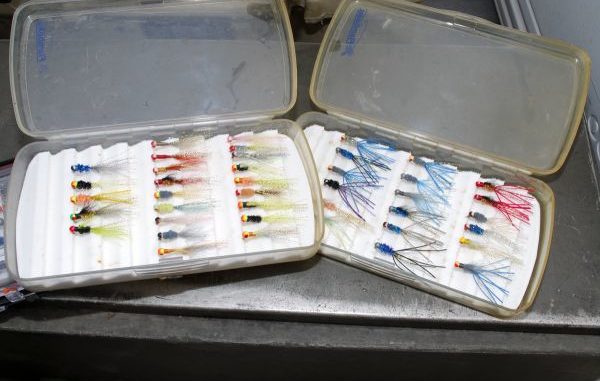
Rhett Buteau has his sac-a-lait fishing tackle down pat for his needs.
Start with his jigs: He ties his own on bulk jigheads ordered from Bass Pro Shops or Cabela’s.
His standard size is 1/32 ounce, although he ties some 1/16-ounce versions for tight-line fishing.
The bodies are made of chenille or thread (those tied with thread sink faster), and the wing is kip tail.
The tail is tied of tinsel and kip tail, although sometimes he substitutes squirrel tail or, believe it or not, his mother’s hair.
Some of his jigs are tied with silicone bug legs.
“They work well for finicky fish, but they attract trash fish,” Buteau explained.
By his definition, “trash fish” include largemouth bass and — to a slightly lesser degree — bream.
Buteau has a host of reasons for using self-made hair jigs. It is cheaper to make them than to buy either rubber tube jigs or commercially-made hair jigs.
And tube jigs, he said, attract too many fish species besides sac-a-lait. Hair jigs are also durable and outlast tube jigs.
He believes custom-made jigs can be built that will coax reluctant fish into biting.
“None that I make can be bought — either colors or materials” Buteau said.
He uses two types of rods. His bread-and-butter rods are 9-foot-long, 5-weight fly rods. For tightlining, he prefers a 10-foot, 7-weight fly rod.
His rods are equipped with single-action fly reels spooled with fly line backing and tipped with 30 to 40 yards of 12-pound-test fluorocarbon line.
“I believe it’s invisible underwater,” Buteau said of his line choice. “The only thing the fish see is the bait.”
He uses the fly reels for a very simple reason.
“Some people use small push-button spinning reels so they can cast, too. I don’t believe in casting,” Buteau said. “The majority of my fishing is in tight places — trying to hit a 5-inch spot.
“From 20 feet away, that’s impossible. I get just 10 feet away and hit it every time.”
Buteau has no particular knot choice, but he cautioned that the knot has to be tight enough that it keeps the jig hanging from the line horizontally.